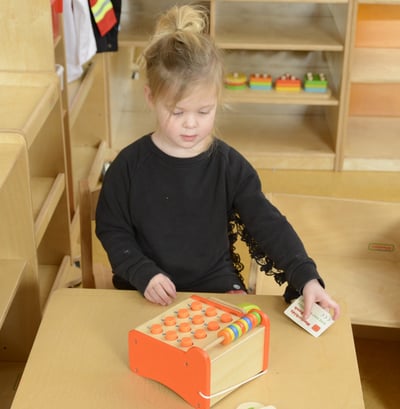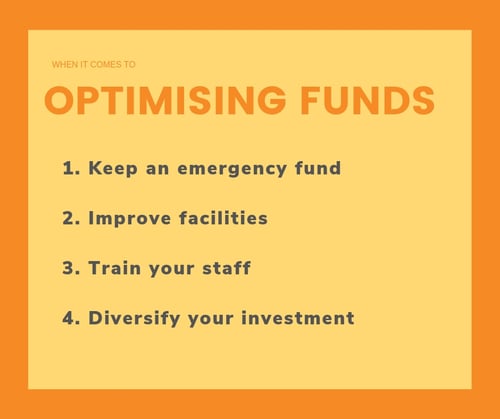.png?width=810&name=Untitled%20design%20(3).png)
Running an Early Childhood Education (ECE) Centre is no different from any other business, except that the social outcomes are typically of enormous value. Money comes in, and money goes out. The key is to keep the former higher than the latter. This involves effective cash flow management.
Every childcare centre is different, and the funding provided by the government also varies.
This is a general guide to help you manage your cash flow and optimise your government funds to ensure your centre is continually providing the best service to your children and their families.
Before you can optimise your government funding, you need to know what is available.
Types of funding
It is important to be aware of the types of funding your centre is eligible for to ensure the maximum amount is paid. This helps to not only smoothly cover costs, but to also make improvements to your centre, such as buying new resources or upgrading play areas.
- ECE Funding Subsidy: Every child that attends a Ministry of Education-approved centre is eligible for funding. This funding doesn’t mean that centres necessarily receive more money, but so that parents pay less.
- 20 Free Hours: When children reach the age of three, there is a subsidy known as 20 Free Hours. This is applied to all children, regardless of parents’ income.
- Plus 10: The remaining 10 hours of available funding beyond the 20 Free Hours. In other words, it’s the difference between 30 hours of ECE Funding Subsidy and 20 Free Hours.
- Equity Funding: Provides additional resources to targeted communities.
- Additional Top-Up for Isolated Services (ATIS): An income top-up for small centres in isolated areas.
All government funding is paid three times a year – the first working day in March, July and November. ATIS Funding is the exception as it is paid only once each year, in arrears. This means several things.
- Records must be accurately kept and provided to ensure that funding is provided accurately.
- If the funding is either overpaid or underpaid, the difference is either paid or deducted through in what is known as a ‘wash up payment’.
- It also means that budgets must be strictly adhered to in order to ensure all outgoings and extras are covered – do not overspend simply because a large sum of money has been deposited in the account!
Childcare centres are not restricted to how their funding money is spent, however, they are obligated to inform parents. As a centre manager, this is where your creative mind comes into play. How can you cover all your costs and have money left over to provide an exciting and thriving learning environment? More importantly, where you spend your money can actually increase the amount of funding you get. Let's talk about Cashflow Management.

Optimise cash flow management
Cash flow is the way money moves in and out of your business within a given time. It’s important to manage it effectively to ensure all costs are covered.
How do I manage cash flow?
The first step is to predict how much cash flow you have. Where does the money come from? Childcare centres gain most of their income from:
- Government funding – by far the biggest source of income
- Parental payments
- Fundraising
- Local community grants
- Donations
Next, you need to look at where the money is being spent. These are the most commons costs incurred on a regular basis in a childcare centre:
- Wages
- Rent / mortgage
- Utilities
- Food
- Insurance
- Supplies
Then it comes down to simple maths – is the money going out higher or lower than the money coming in?
If you are in deficit, then you have some work to do. However, according to the 2013 Survey of Income, Expenditure and Fees of Early Childhood Education Providers*, many centres operate at a surplus. It is very important to note that a surplus is different from a profit.
Why? Because the surplus is usually spent!

How to spend your surplus (and optimise your government funding)
If you are in the position of having positive cash flow, there are a few things you can do.
1. Place some in an emergency fund – you never know whats around the corner. Numbers may drop, rises in rates and rent can occur, major building works may be required. It’s always good to have some money saved for these occasions.
2. Improve your facilities – whilst the point above is the most practical and financially sound advice, improving your facilities is key. In fact, not spending money here may come back to bite you later. Make sure you keep your building, furniture and educational resources, up to scratch. A better equipped centre leads to more enrolments which leads to more funding. It’s a positive cash flow cycle!
3. Professional Development – look after your staff and they will take care of the rest! Send them on courses to improve their teaching and learning, invite guest speakers to share valuable information with your parents. This also helps keep enrolment numbers up.
4. Invest – this may seem a little risky, but if you have taken care of debts and any extras, consider investing some or your surplus cash. Most banks offer school business accounts and can provide sound advice on safe, but worthwhile investing options.
Overall, the best way to optimise your government funds is to have solid enrolment numbers. This helps you predict your cash income by knowing how much you will be receive on those three payment dates. In order to keep your enrolment numbers, it is important to invest any extra cash into facilities, quality teachers and up-to-date resources.
*https://www.educationcounts.govt.nz/__data/assets/pdf_file/0011/169814/2013-Survey-of-Income-Expenditure-and-Fees-of-ece-Providers.pdf



